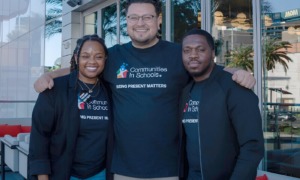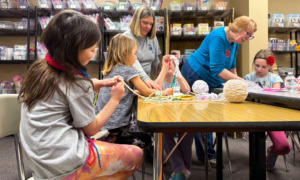 Education system redesign champions readily acknowledge the need to include youth, parents, K-12 and community educators, employers and other system stakeholders as critical contributors to the redesign process. They value their perspectives and contributions. But these stakeholders are not often able to bring the full weight of their experiences and perspectives to the table, even when all parties are willing. There are many reasons these interactions fall short of their potential. But one of the main reasons is a mismatch of language.
Education system redesign champions readily acknowledge the need to include youth, parents, K-12 and community educators, employers and other system stakeholders as critical contributors to the redesign process. They value their perspectives and contributions. But these stakeholders are not often able to bring the full weight of their experiences and perspectives to the table, even when all parties are willing. There are many reasons these interactions fall short of their potential. But one of the main reasons is a mismatch of language.
Thriving. Development. Learning. Education. All terms associated with youth success. But one of these concepts is not like the other. A simple word cloud exercise — posing to one of the ubiquitous AI engines the simple question “how do people talk about ____?” revealed the deep conceptual mismatch between our goals for youth and our acceptance of the system charged with their progress.
Thriving isn’t as much a part of the daily education vernacular as learning, development, education or school. But it is a familiar term in goal and vision statements. The words associated with thriving are dynamic, referencing an undeniably positive process. They suggest purposeful, forward movement towards desired states of being: fulfillment, health, happiness, empowerment. In “When Youth Thrive, We All Thrive,” I noted that thriving is a term used to describe individuals, systems, ecosystems and communities, reflecting our intuitive understanding of the interconnections between individual and collective thriving.
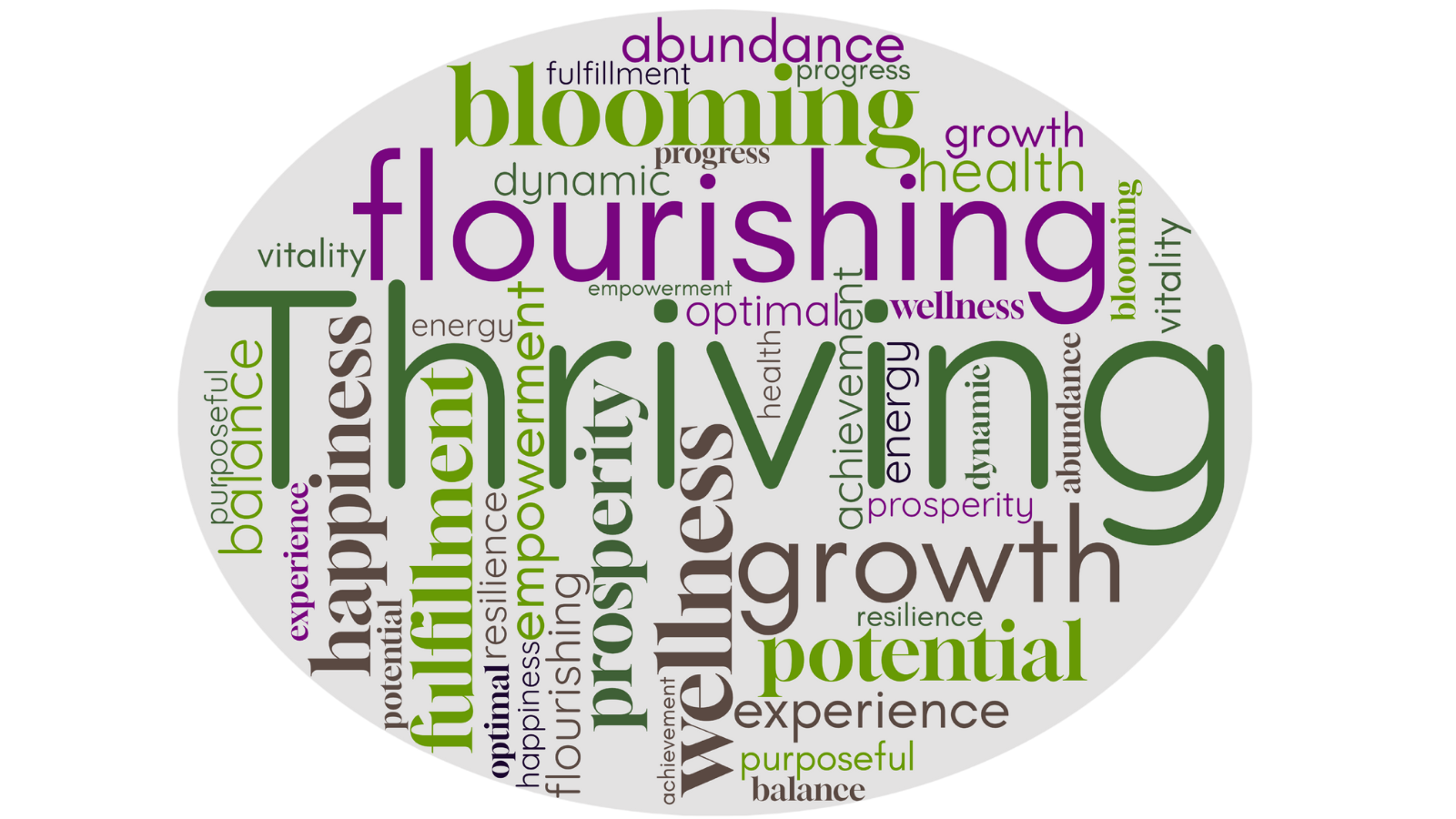 |
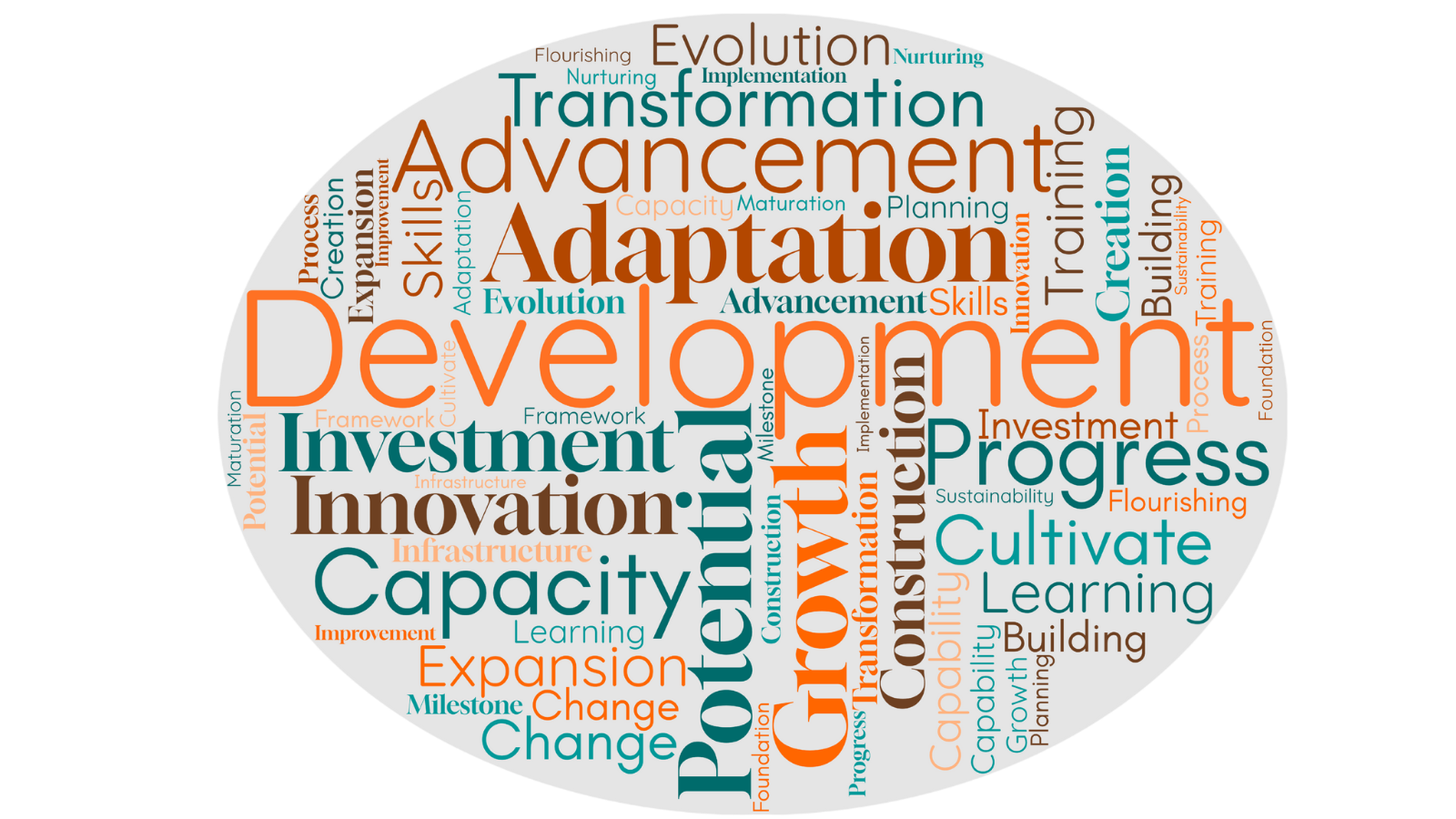 |
Development, like thriving, has many positive associations. Terms like growth, progress and potential show up in both word clouds. But development is associated more with ongoing processes — natural (e.g., maturation, evolution) or constructed (e.g., training, cultivation) that build or cultivate capacity, skills and foundations.
The words associated with learning are much more specific. They include words associated with the natural learning process (e.g., exploration, curiosity, adaptation, experience) and broad learning outcomes (e.g., skills, intelligence, knowledge, wisdom) as well as words like study, comprehension, practice, mastery and teaching that are associated with formal instruction. Words like growth and progress link learning to thriving and development. But it is worth noting that the terms learning and thriving do not appear in the other’s word clouds. They connect through the concept of development.
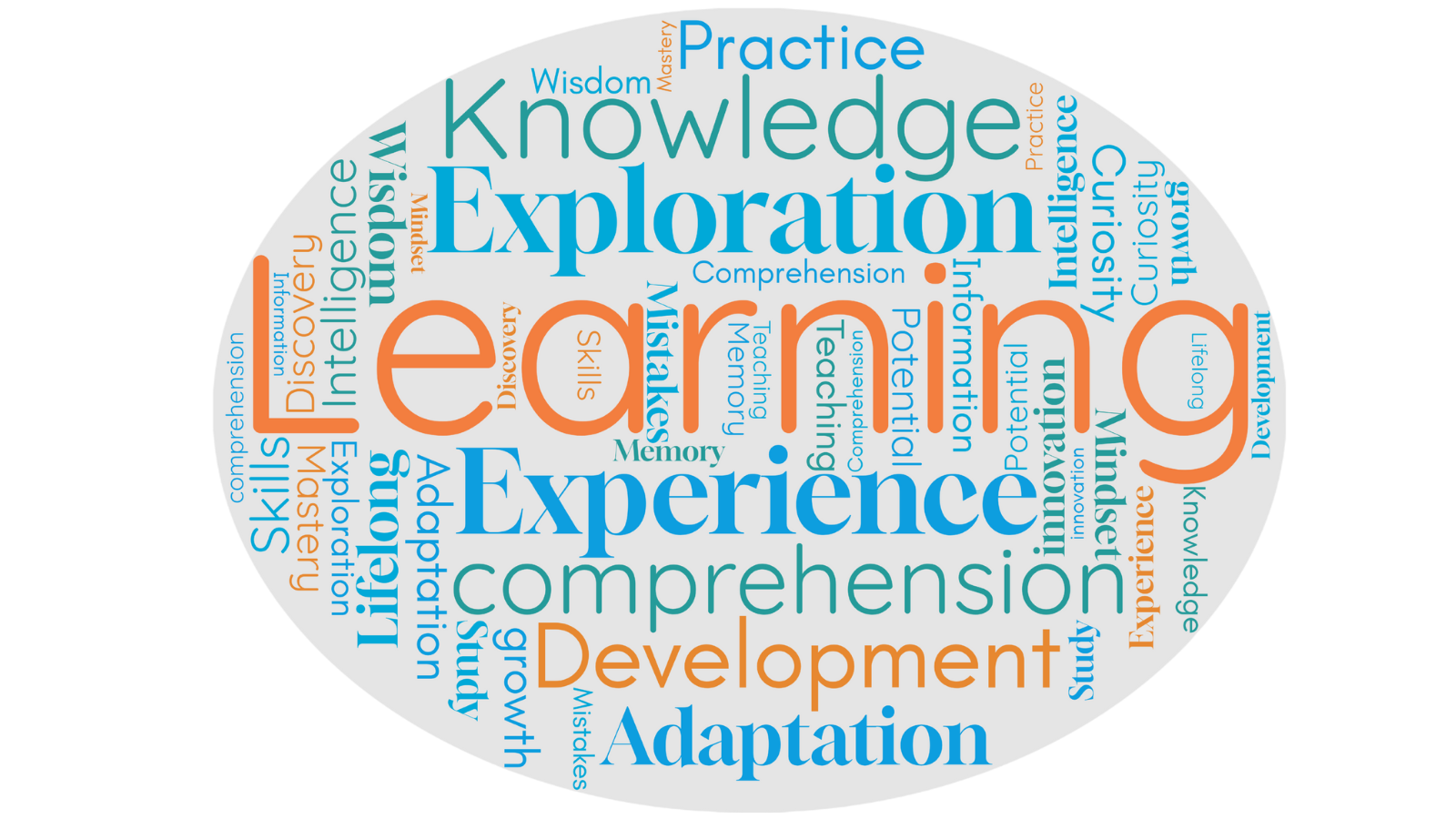 |
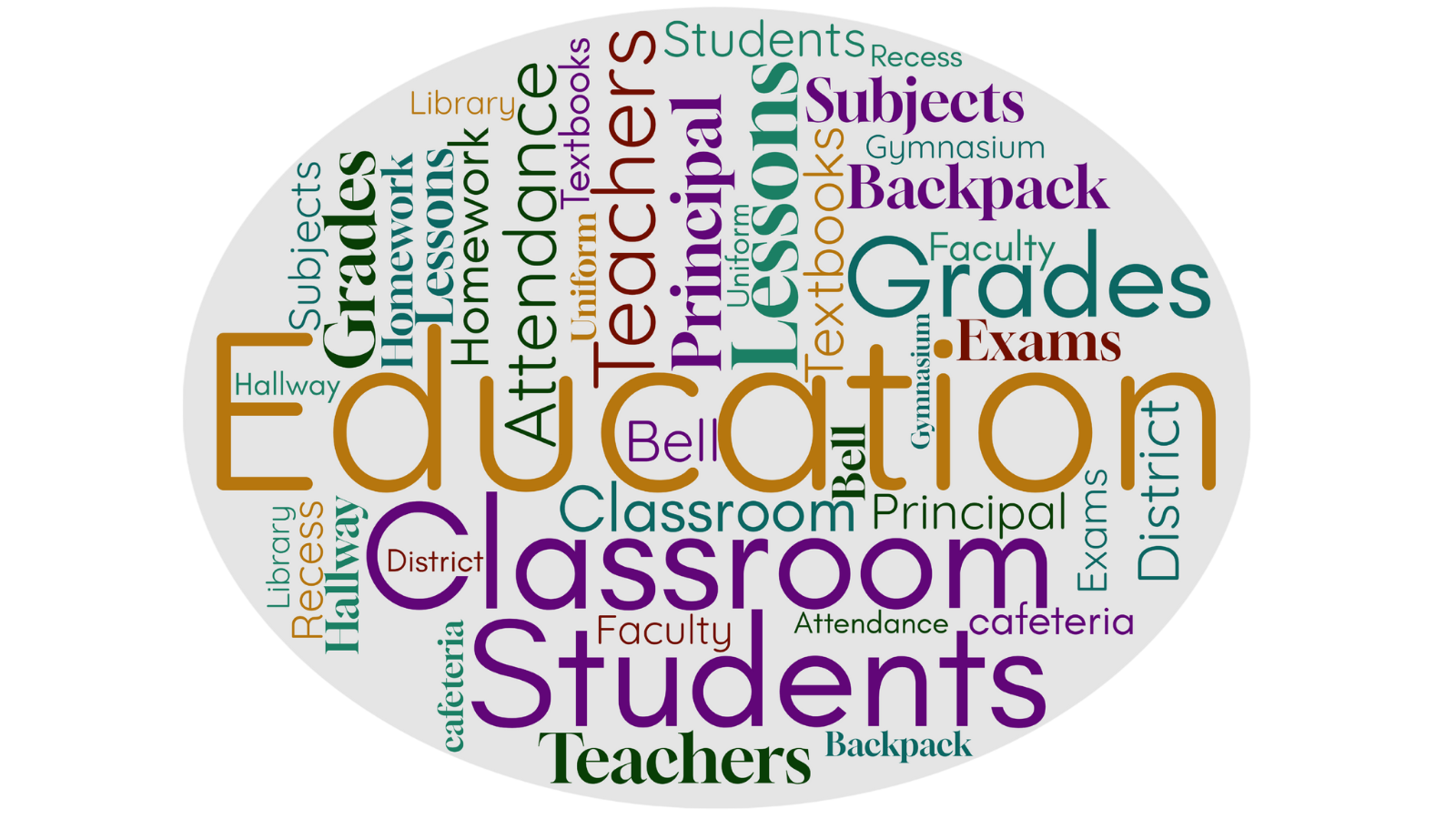 |
The words associated with education have a very different vibe. I expected to see more terms like classrooms, bells, exams, textbooks, attendance, hallways, recess, subjects, lessons and grades. But the absence of any words associated with learning, development or thriving is jarring.
The grammar of schooling
Researchers Jal Mehta and Amanda Datnow describe this phenomenon as “a yawning gap between the ways in which schools are organized and what we know promotes positive youth development and learning.” With these findings in mind, they conclude that “there is a critical need to examine efforts to change the grammar of schooling given the misalignment between this grammar and much of what we know would provide thriving conditions for youth.”
The term grammar of schooling was coined by David Tyack, William Tobin and Larry Cuban in 1994 to describe the structures and rules that organize instruction and shape our understanding of what learning is; where, when, with whom and for whom it happens; and why it matters. Rules that include batch processing of students, standardized content, single-subject teacher-led classes, age- and ability-sorted classrooms, seat time, grades, multiple-choice tests and top down planning that locks out the community. They use the term grammar because these forms and structures of schooling have persisted over time, just as our rules of grammar shape our language. Mehta and Sarah Fine provide a useful from/to chart to specify the range of elements that will need to shift in order to have a stable new foundation (e.g., from teaching as transmission to learning through doing, from seat time and standardized tests to creation of worthy projects).
Disruptive innovations depend on three elements:
- Enabling technologies.
- Innovative business models to leverage the technologies.
- New value networks capable of sustaining the innovations.
Education is strong on the first two elements but weak on the third. It lacks alternative value networks strong enough to create and sustain the multiple system-level changes needed to adopt a new grammar of schooling. Quoting Arnett, “an organization’s value network represents the context of individuals, other organizations, institutions and regulations it interfaces with to establish and maintain its model.” An organization’s value network is the dominant influence on its priorities (its value proposition), operational processes, human and physical resources and financing models.
Schools’ have particularly large, complex value networks that “often include local, state and federal education agencies and policymakers; learners and their families; employee unions; voters and taxpayers; the postsecondary education system; community organizations; vendors; teacher preparation pipelines; and philanthropic donors. This makes schools particularly vulnerable to the problem described in the “immovable boulder” story. Everyone has a stake in moving a huge boulder off the road. But because they push the boulder from all sides, the boulder doesn’t move, no matter how hard they try.
Arnett doesn’t think it possible to get all of the K-12 value network on the same side of the boulder. Progress is being made. But it is slow and spotty. Arnett asks,
“How quickly can we assemble alternative value networks to nurture and support these promising new educational models?”
I agree with the question but would tweak the wording. The term “assemble” has two meanings — build and gather. I would change “assemble” to “align” to emphasize the second meaning.
Alignment is possible because innovations in enabling technologies make it possible to define and document learning outcomes, learning experiences and learning credentials with more consistency and precision no matter the setting. Focusing on the learner versus the system makes it possible to use these technologies to bring together the numerous value networks associated with innovative schools (e.g., XQ Institute, EL Education, Education Reimagined, Next Generation Learning, Big Picture Learning and more).
However, the fastest way to assemble an alternative value network strong enough to redesign the grammatical structure of schooling may be to align the value networks of K-12 school innovators with those of the organizations and systems that support learning outside of the classroom that have never defined themselves as schools (e.g., members of the National Summer Learning Association, Outward Bound, The Corps Network, Opportunity Youth Forum, Every Hour Counts, Afterschool Alliance, National Afterschool Association and more). These organizations, having never been bound by the K-12 grammar, have had the freedom to codify elements consistent with the new grammar of schooling into their operations and systems.
Together, these innovators can be charged with co-designing a new architecture that maintains the core functions of education, but revamps the processes to support flexible, year-round learning pathways in which youth and young adults get credit for competencies, contributions and connections throughout the learning ecosystem.
***
In her columns, Karen Pittman is exploring the research behind the statement, “When Youth Thrive, We All Thrive.”



















